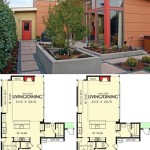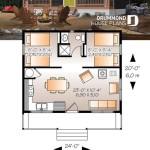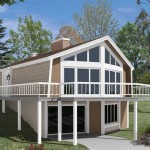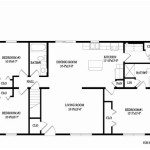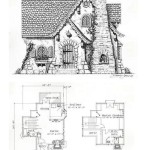How to Create a Framing Plan in Revit 2024
Framing plans are essential for structural engineering and construction projects. They provide a detailed visual representation of the structural members, their sizes, locations, and connections. Revit, with its Building Information Modeling (BIM) capabilities, offers a powerful platform for creating accurate and comprehensive framing plans. This article outlines the process of creating a framing plan in Revit 2024, focusing on key steps and best practices for efficient workflow and accurate documentation.
Before starting, it is necessary to have a properly modeled architectural or structural model. This model should include elements like walls, columns, and floors, which serve as the basis for the framing elements. The accuracy of the framing plan depends highly on the accuracy of the base model.
Setting Up the Project and View
The initial step involves preparing the Revit project and establishing the view specifically for the framing plan. This includes defining the level, view template, and visibility settings.
First, ensure the correct project template is selected when launching Revit. The "Structural Template" is generally recommended, as it pre-loads structural families and settings. If using a different template, load the necessary structural families, such as beams, columns, and bracing.
Navigate to the desired level in the Project Browser. It's common to create separate framing plans for each floor level. If a level doesn't exist, create it under the "Elevations" node, specifying the correct elevation height. Right-click on an elevation view and select "Create Similar" to add a new level.
Next, create a new structural plan view specifically for the framing plan. Go to the "View" tab, click on "Plan Views," and select "Structural Plan." Choose the appropriate level and click "OK." This creates a dedicated view optimized for structural elements.
Applying a suitable view template streamlines the process and ensures consistency. Select the framing plan view in the Project Browser. In the Properties palette, under "Identity Data," locate the "View Template" parameter. Click "None" and select a suitable structural view template from the list. If none are appropriate, create a custom view template specifically for framing plans. This template should control visibility settings, graphic overrides, and annotation parameters.
Fine-tune the visibility settings to display only relevant elements. Go to the "View" tab and click "Visibility/Graphics." Alternatively, type "VG" to open the Visibility/Graphics Overrides dialog box. Hide architectural elements that are not essential for the framing plan, such as furniture, fixtures, and interior partitions. Ensure that structural elements, including beams, columns, bracing, and walls, are visible. Adjust the "Halftone/Underlay" settings for architectural elements if they need to be subtly displayed for reference.
Set the view's detail level to "Medium" or "Fine" to ensure that structural connections and member profiles are clearly visible. Adjust the scale of the view to a suitable size for printing and readability. A typical scale for framing plans is 1/4" = 1' or 1/8" = 1'.
Modeling Structural Framing Elements
With the view setup complete, begin modeling the structural framing elements. This involves placing beams, columns, bracing, and other structural members according to the design specifications.
Start with the primary structural members, such as columns and beams. Go to the "Structure" tab and click on "Column." Choose the appropriate column family from the Type Selector. If the desired family is not available, load it from the Revit library. Place the columns at the specified grid intersections or locations, paying close attention to their base level and top level constraints. Verify the column orientation and adjust it as necessary to align with the structural grid.
Next, place the beams. Go to the "Structure" tab and click on "Beam." Select the appropriate beam family from the Type Selector. If necessary, load a new beam family. Place the beams by clicking on the start and end points, typically snapping to the centerlines of the columns. Ensure that the beam's level and reference level are correctly set. Adjust the beam's justification and offset to align it properly with the columns.
Add bracing elements to provide lateral stability. Go to the "Structure" tab and click on "Brace." Select the appropriate bracing family. Place the bracing members between columns or beams, following the structural design. Adjust the bracing's end attachments and connections to ensure proper load transfer. Consider using different bracing types, such as diagonal bracing, X-bracing, or K-bracing, depending on the structural requirements.
Model floor framing elements, such as joists and purlins. Go to the "Structure" tab and use the "Beam System" tool. Draw a boundary around the area to be framed, and then define the beam direction. Specify the beam type, spacing, and justification. Revit automatically generates the beam system based on these parameters. Adjust the beam system as needed to accommodate openings or other structural features. Consider using different beam system types, such as one-way or two-way systems, depending on the floor loading requirements.
Utilize the "Copy" and "Array" tools to efficiently replicate structural members. Select the element to be copied or arrayed, and then use the appropriate tool to create multiple instances. Ensure that the copied or arrayed elements are properly aligned and connected to the surrounding structure. Modify any instances that require adjustments to accommodate specific design requirements.
Pay close attention to the structural connections between members. Use the "Connection" tool in the "Structure" tab to add structural connections. Revit offers a variety of connection types, such as shear connections, moment connections, and bolted connections. Select the appropriate connection type based on the load transfer requirements. Adjust the connection parameters, such as bolt sizes, weld sizes, and plate thicknesses, according to the structural design calculations. Properly modeled connections are essential for accurate structural analysis and fabrication.
Annotating and Detailing the Framing Plan
After modeling the structural elements, annotate and detail the framing plan to provide clear and concise information for construction. This includes adding dimensions, tags, notes, and symbols.
Add dimensions to indicate the sizes and locations of structural members. Use the "Aligned Dimension" tool in the "Annotate" tab to dimension between grid lines, columns, beams, and other structural elements. Use the "Spot Elevation" tool to indicate the elevations of floor levels and structural members. Ensure that the dimensions are clear, accurate, and follow the established drafting standards.
Tag the structural members to identify their type, size, and material. Use the "Tag by Category" tool in the "Annotate" tab to tag the beams, columns, bracing, and other structural elements. Customize the tag content to display the necessary information, such as member size, material grade, and mark number. Ensure that the tags are placed in a clear and consistent manner, avoiding overlapping or obscuring other elements.
Add notes and symbols to provide additional information and clarification. Use the "Text" tool in the "Annotate" tab to add notes explaining specific design features or construction requirements. Use the "Symbol" tool to add symbols representing welding symbols, bolt symbols, or other structural details. Ensure that the notes and symbols are clearly labeled and referenced.
Create detail views to show specific structural connections or complex framing conditions. Use the "Callout" tool in the "View" tab to create a detail view. Zoom into the area of interest and add detailed annotations and dimensions. Use the "Component" tool in the "Annotate" tab to add detail components representing bolts, welds, or other structural hardware. Ensure that the detail views are properly referenced and linked to the framing plan.
Use the "Revision Cloud" tool in the "Annotate" tab to highlight any changes or revisions to the framing plan. Cloud the areas that have been modified and add a revision tag indicating the revision number and date. This helps to track changes and ensure that the latest information is being used.
Develop a sheet for the framing plan. Create a new sheet by right-clicking on "Sheets" in the Project Browser and selecting "New Sheet." Choose the appropriate title block family. Drag the framing plan view onto the sheet. Adjust the view's position and scale to fit within the title block. Add any necessary sheet information, such as project name, sheet title, and sheet number.
Finally, review the framing plan thoroughly to ensure accuracy and completeness. Check for any errors, omissions, or inconsistencies. Verify that all dimensions, tags, and notes are correct and legible. Coordinate with other disciplines, such as architecture and MEP, to ensure that the framing plan is properly integrated with the overall building design.

Autodesk Revit Student Built House Framing Plan

Revit The Ultimate Framing Plan Cadclips

Getting Started With Post Beam Framing Extension For Revit Arkance Lithuania

Autodesk Revit Student Built House Framing Plan

Revit Structural Framing Tutorial Roof With Beam Systems

Autodesk Revit Student Built House Framing Plan

Framing Plan Of All Floors And Beam Schedule Structure Details Apartment Building Dwg File

Can T Override Appearance Of Structural Framing What Am I Doing Wrong Autodesk Community

What S New In Strucsoft For Revit 2024 News

Getting Started With Post Beam Framing Extension For Revit Arkance Lithuania
Related Posts


